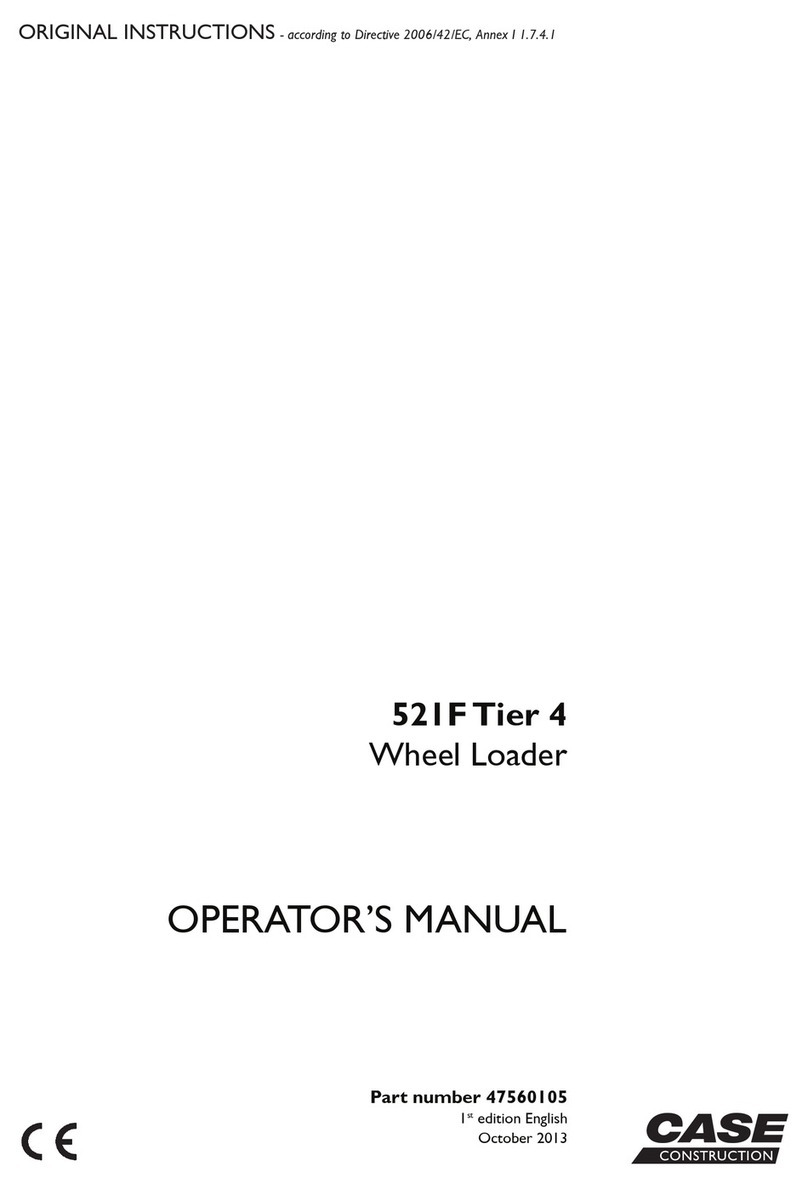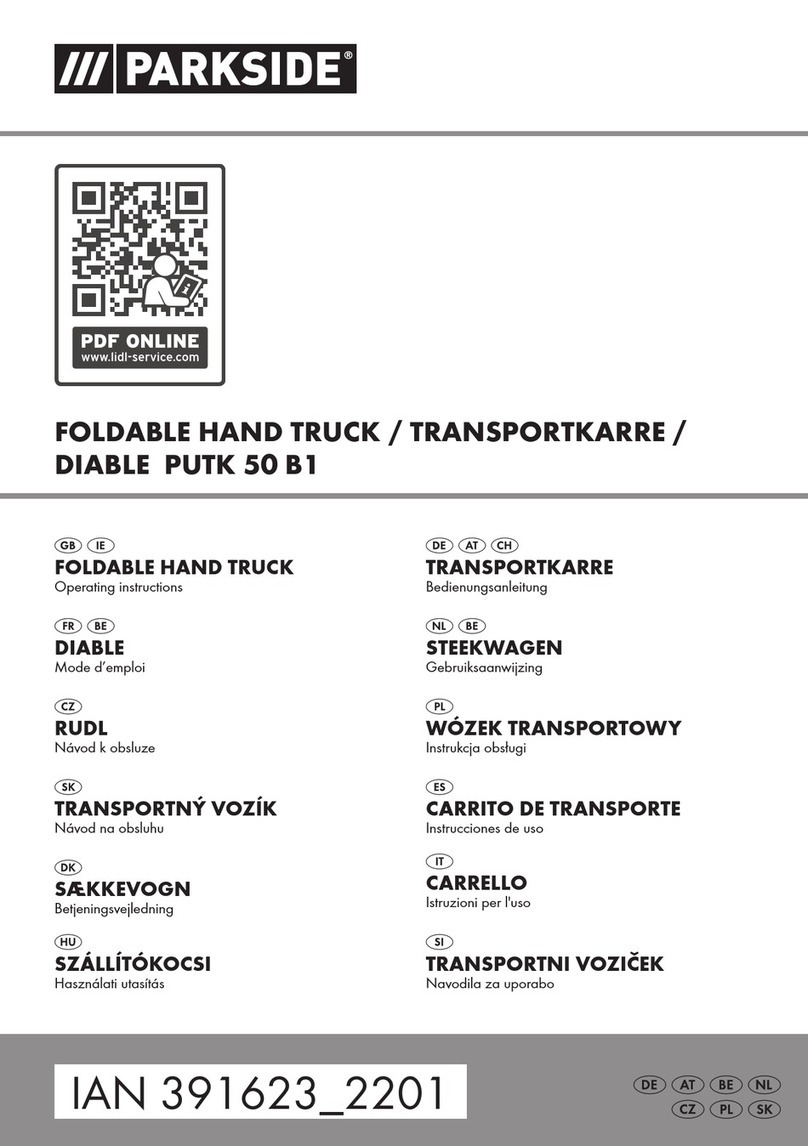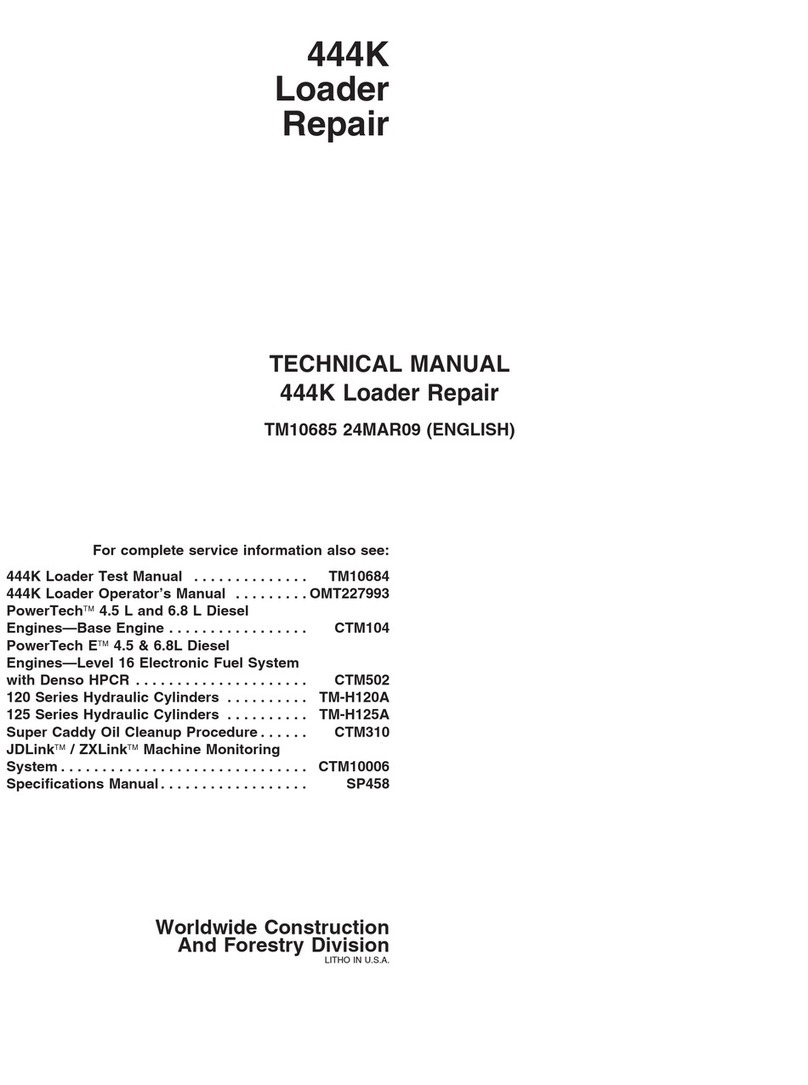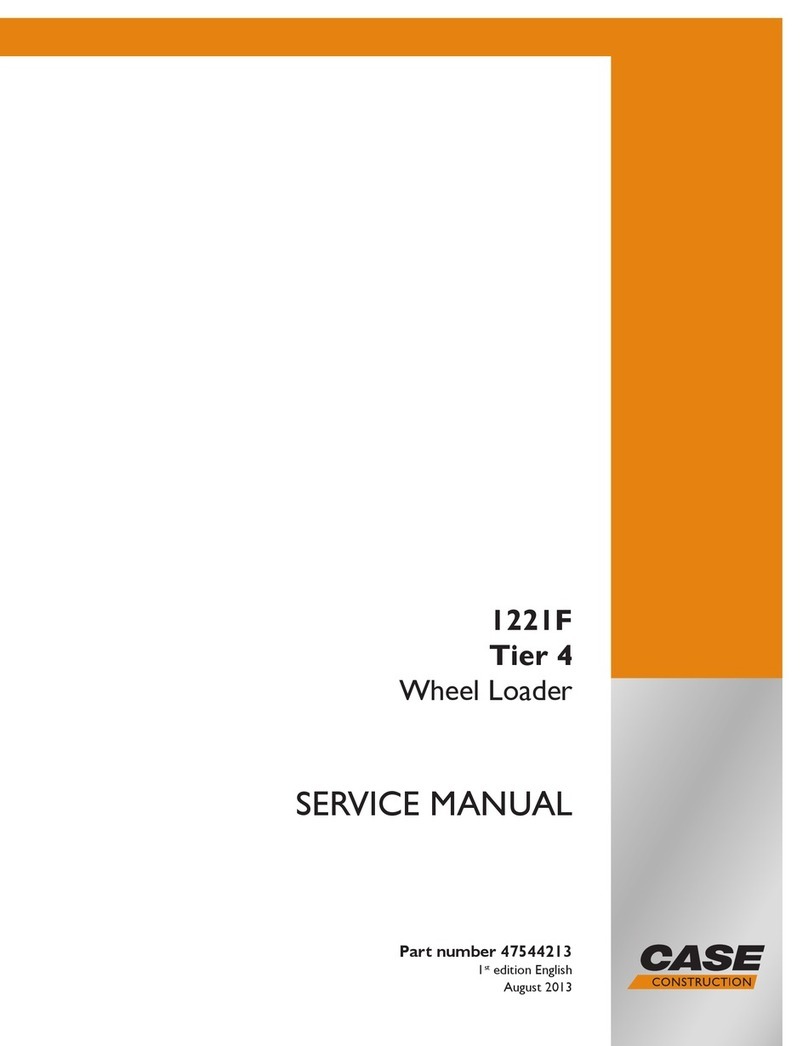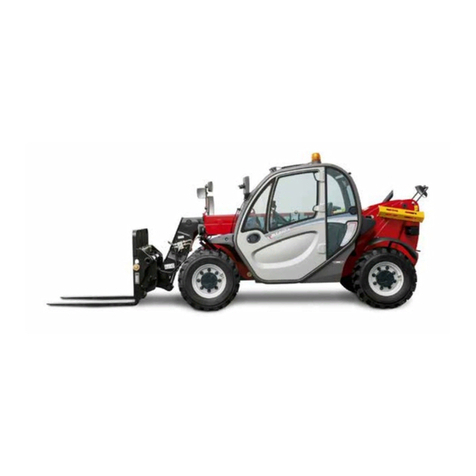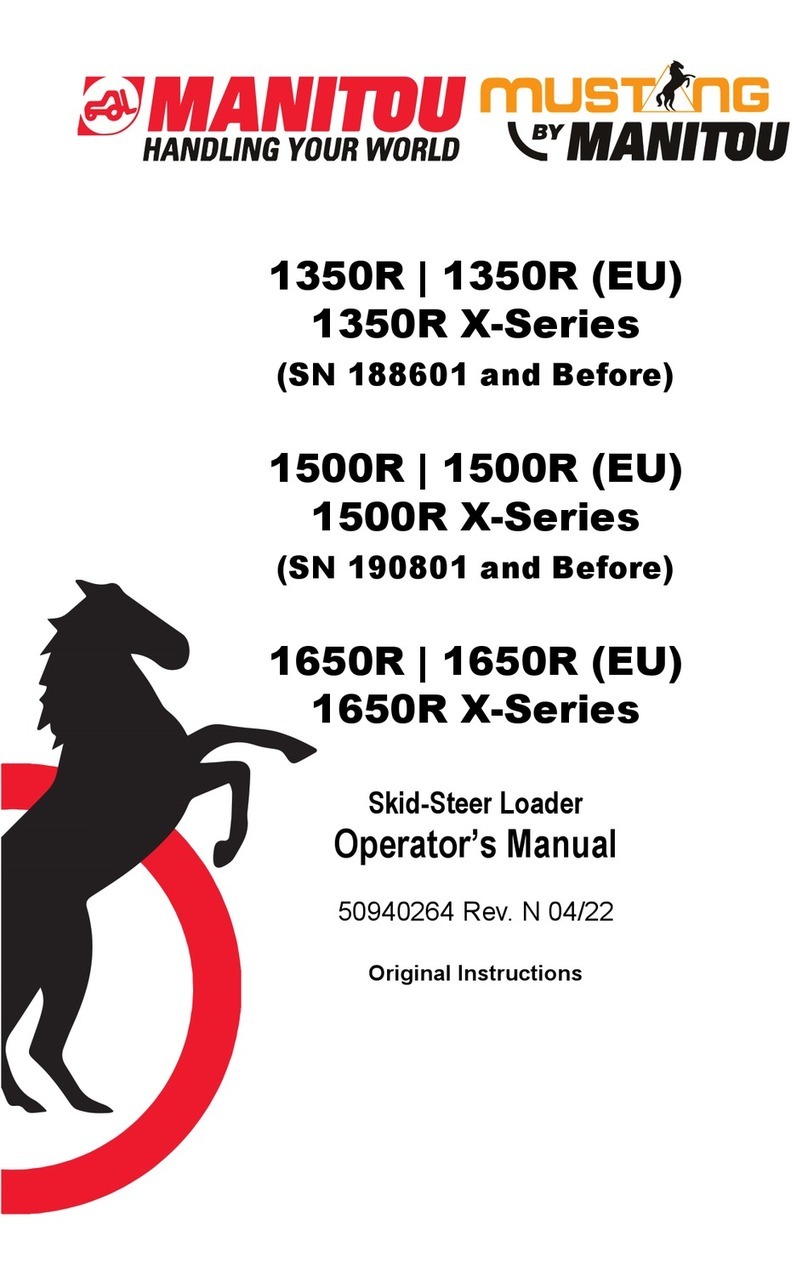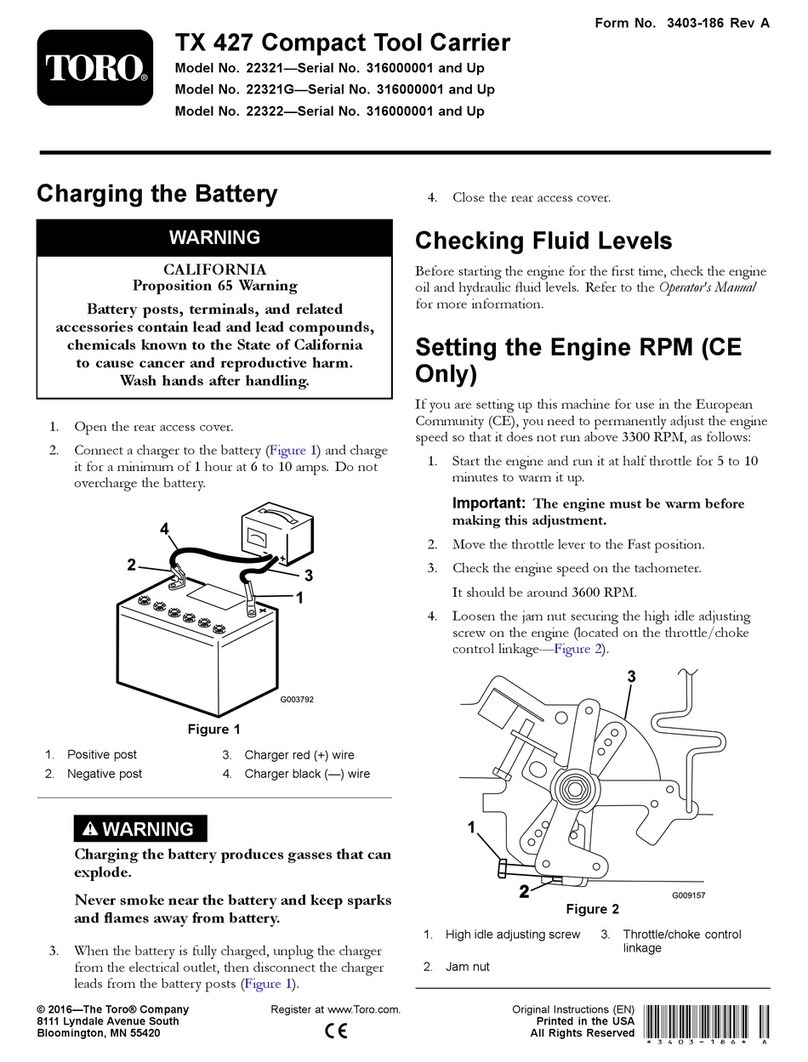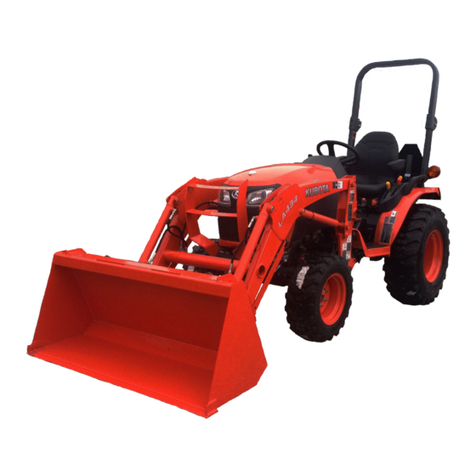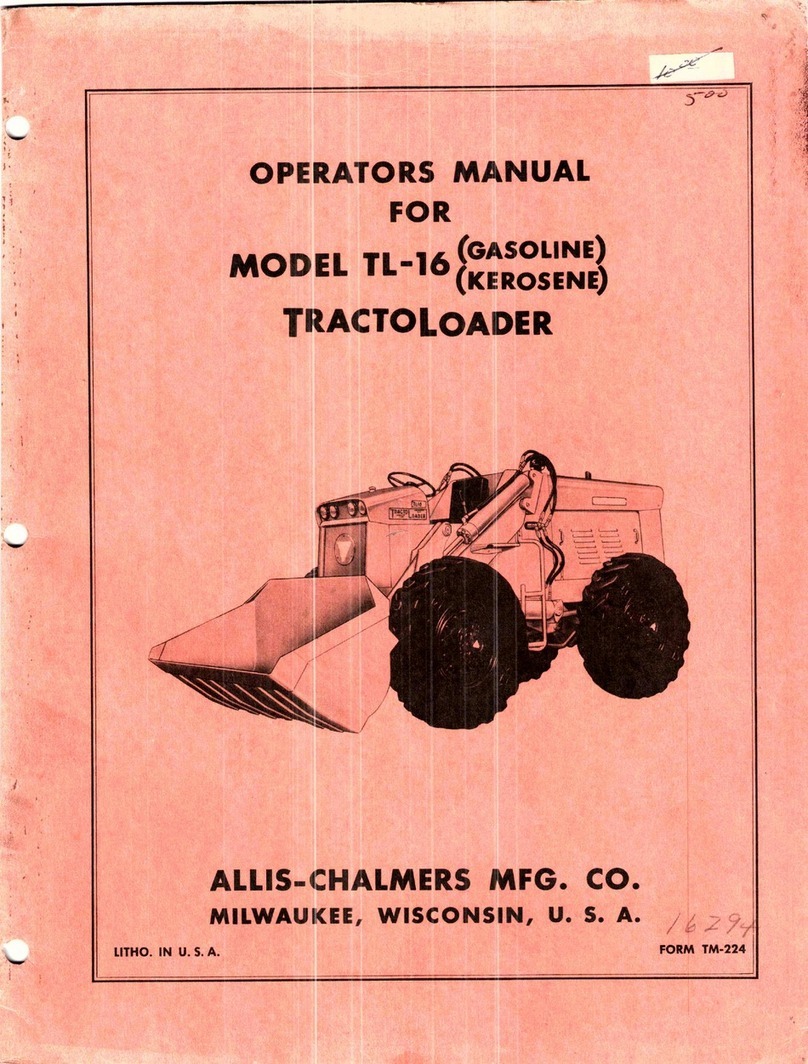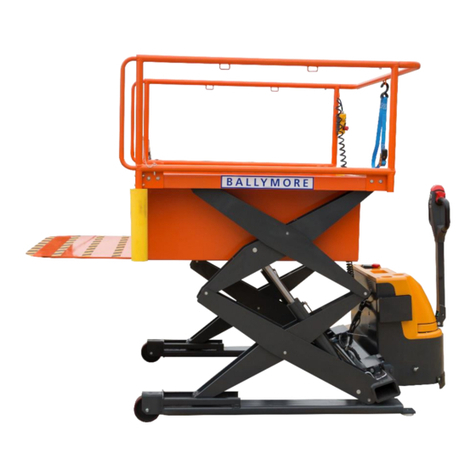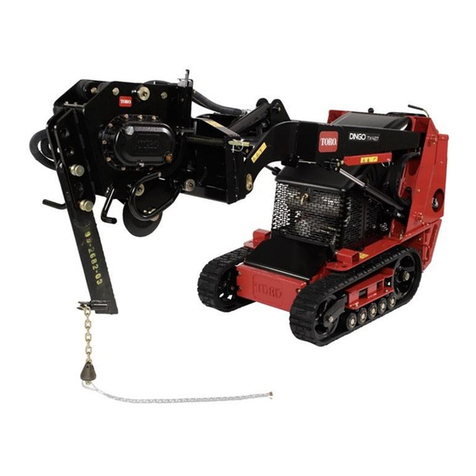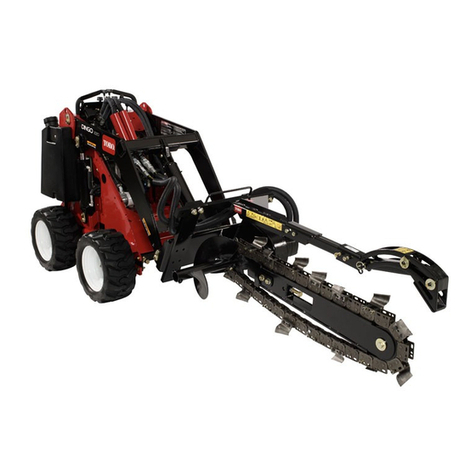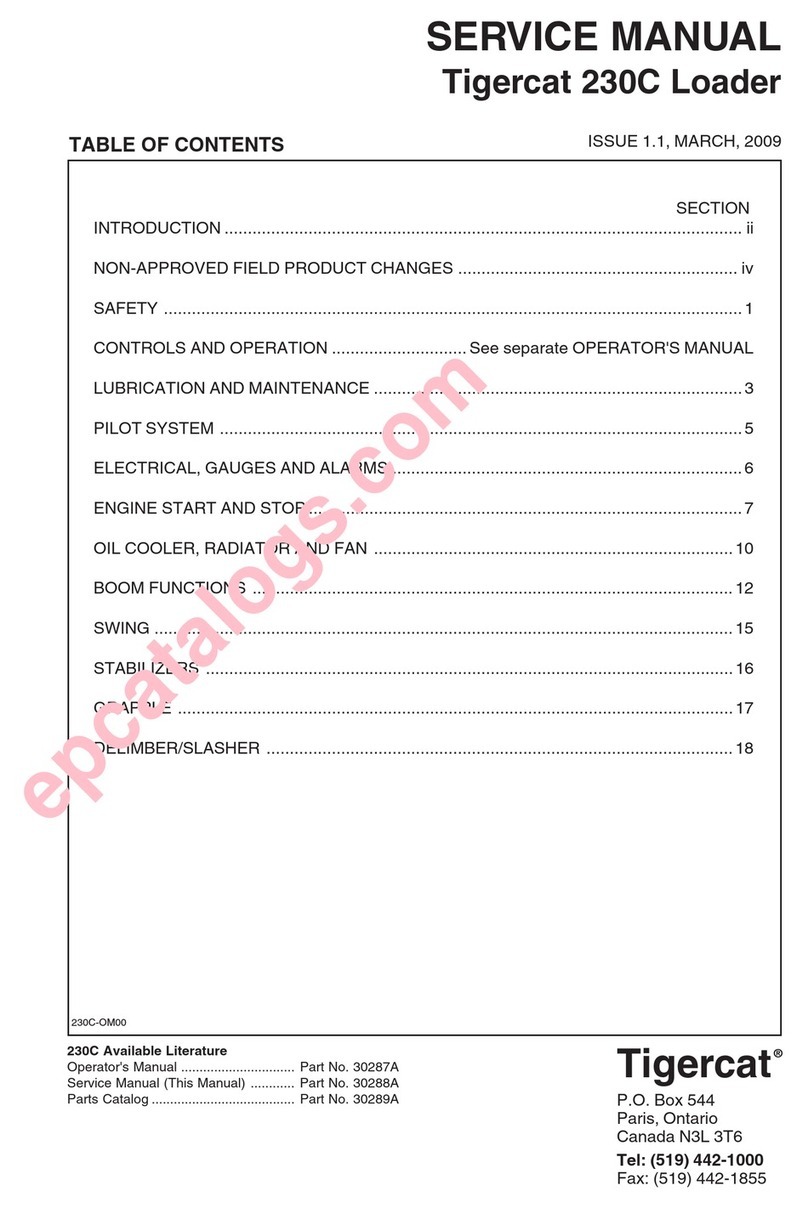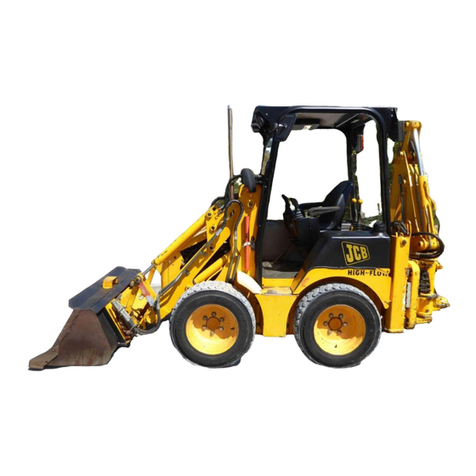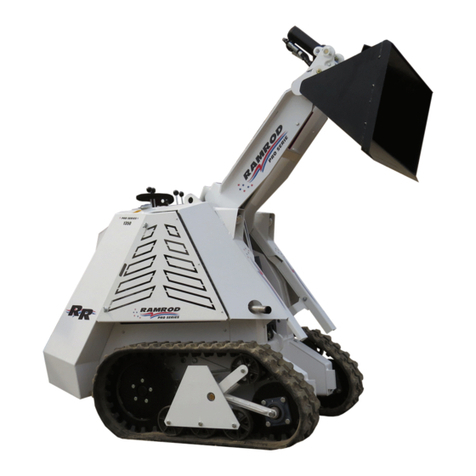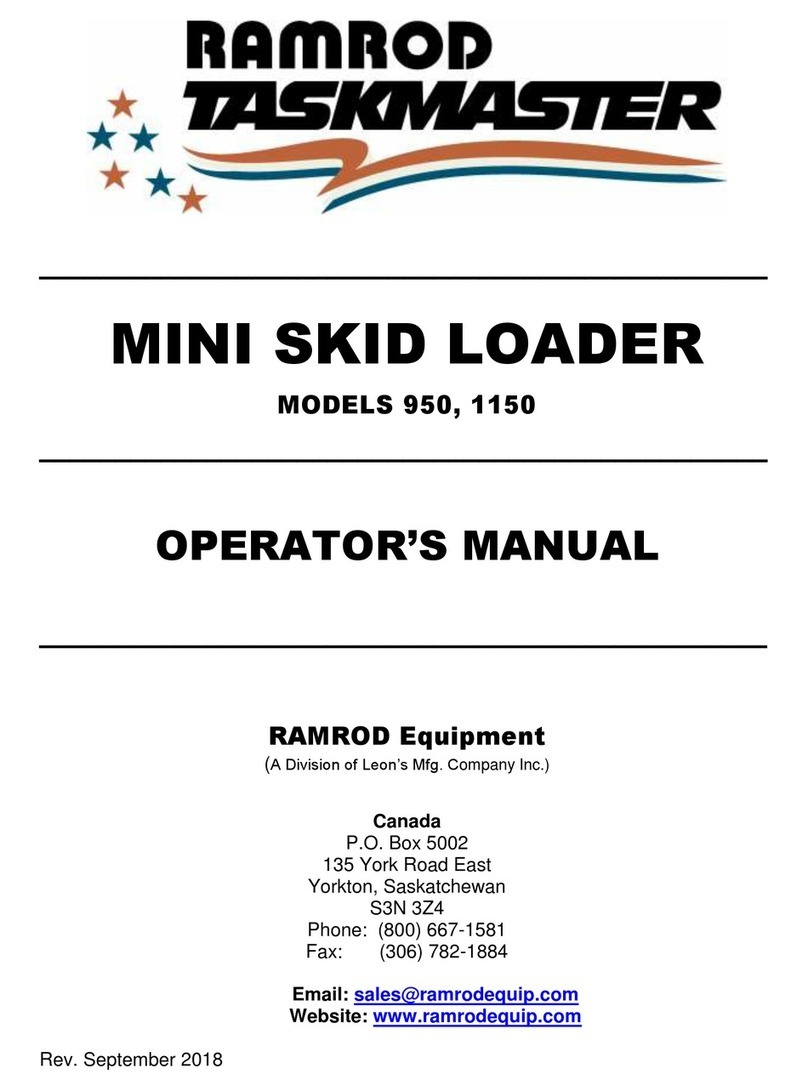
Introduction
6 Printed in U.S.A.
A storage location is provided behind the
operator’s seat for storing the operator’s
manual. After using the manual, return it to
the storage container.
This manual is considered a permanent
part of the machine and should be with
the machine at all times. If the machine is
resold, include this operator’s manual as part
of the sale.
Replace this manual promptly if it becomes
damaged, lost or stolen.
Some illustrations in this manual may show
doors, guards and shields open or removed
for illustrative purposes only. BE SURE all
doors, guards and shields are in their proper
operating positions BEFORE starting the
engine to operate the machine.
Because of ongoing product improvements,
information included in this manual may not
exactly match the machine. Manitou Group
reserves the right to modify and improve
products at any time without notice or
obligation.
Machine Orientation
“Right” and “left”, as described in this man-
ual, are determined from a position sitting in
the operator’s seat and facing forward.
Proper Machine Use
Improper use of the machine can result in
property damage, injury or death.
The machine is designed only for digging,
picking up, lifting, transporting and unload-
ing materials. Use of approved attachments
is also allowed. Using the machine in any
other way is considered contrary to the
intended use. Compliance with, and strict
adherence to, the conditions of operation,
service, and repair as specied by the manu-
facturer also constitute essential elements of
the intended use.
50950436/G0121
The machine was designed and built accord-
ing to the best available technology and
approved safety regulations in the countries
where it is sold. However, it is impossible
to completely safeguard against abusive,
improper use. The operator must always
consider potential safety risks and hazards
during operation. Accident prevention
regulations, all road trac regulations, and
all other generally recognized safety and
occupational medicine regulations must be
observed at all times.
The machine must be maintained in proper
operating condition. Any damaged or
malfunctioning parts must be repaired or
replaced immediately.
Any arbitrary modication carried out to the
machine may relieve the manufacturer of
liability for any resulting damage or injury.
Service and Registration
The wide Manitou Group dealership net-
work stands ready to provide any assistance
that may be required, including genuine
service parts. All parts should be obtained
from or ordered through your dealer.
When ordering service parts, provide
complete information about the part and the
quantity required. Also provide the model
and serial numbers of the machine. For
your safety and continued proper operation,
use only genuine service parts. Record the
model and serial numbers in the spaces
below for quick reference.
